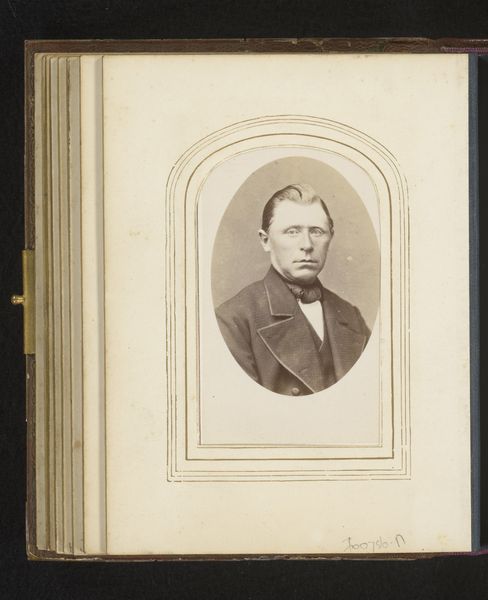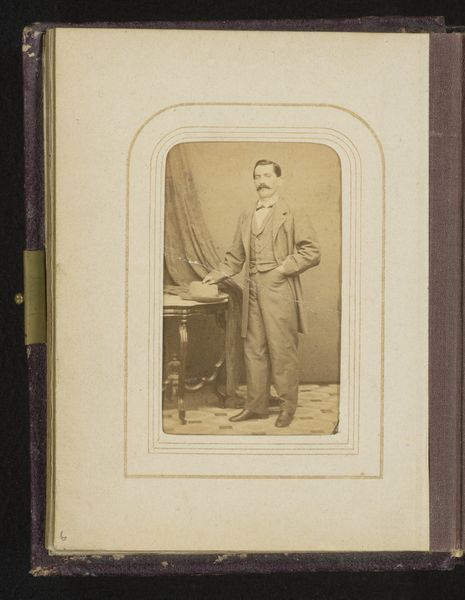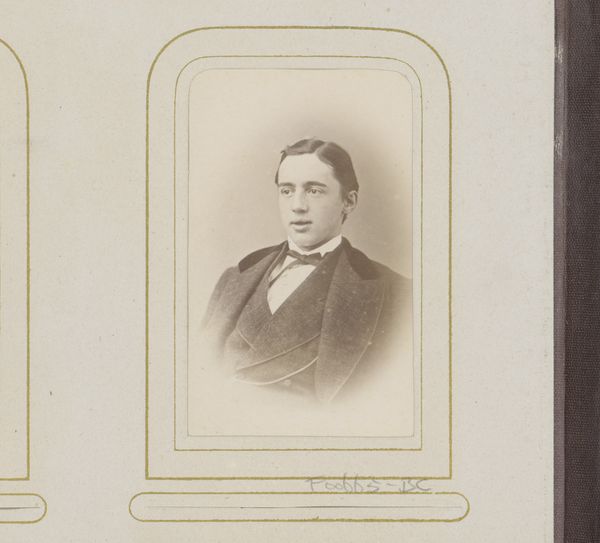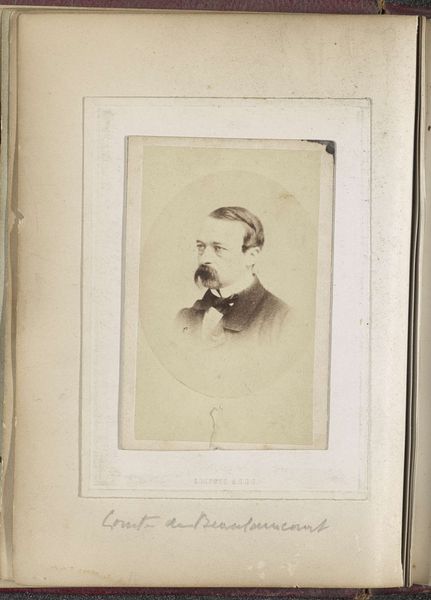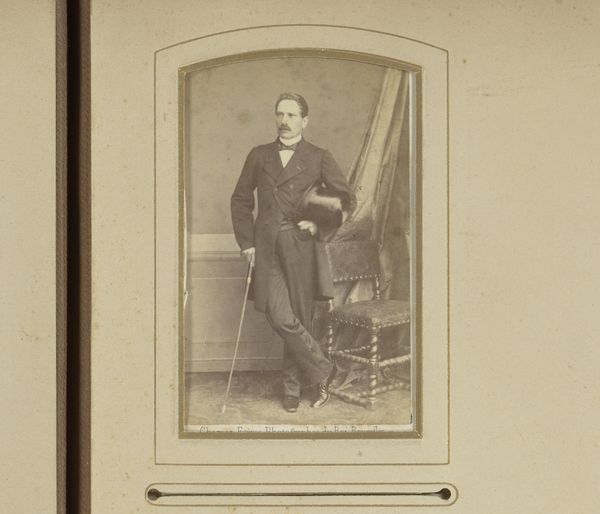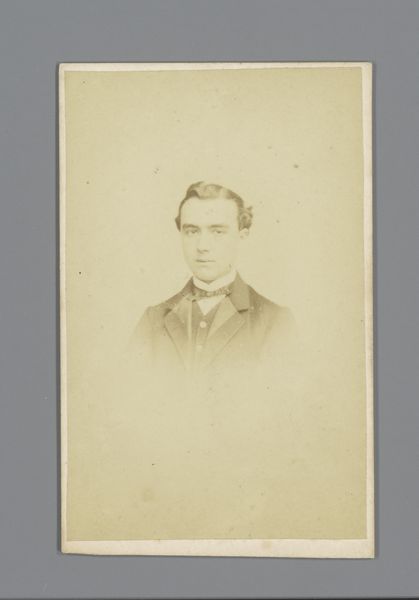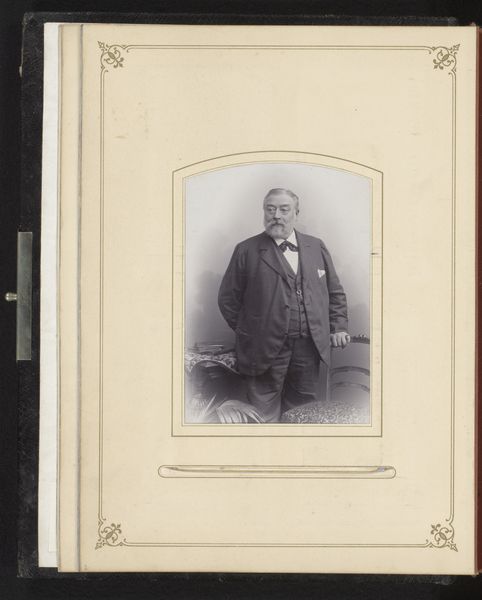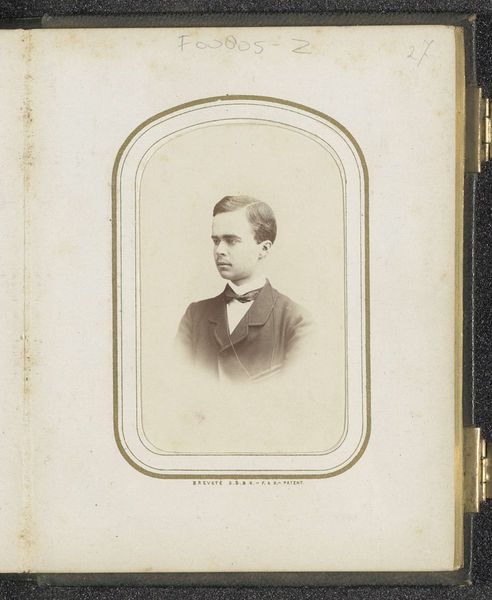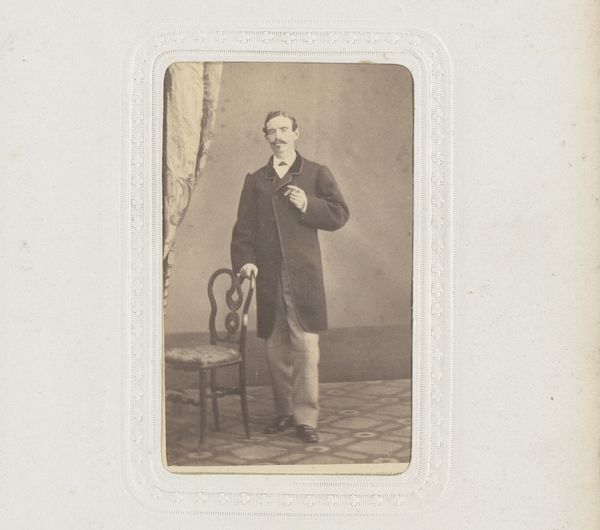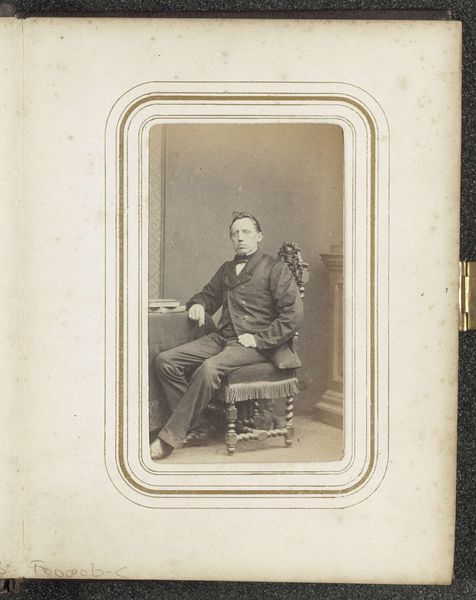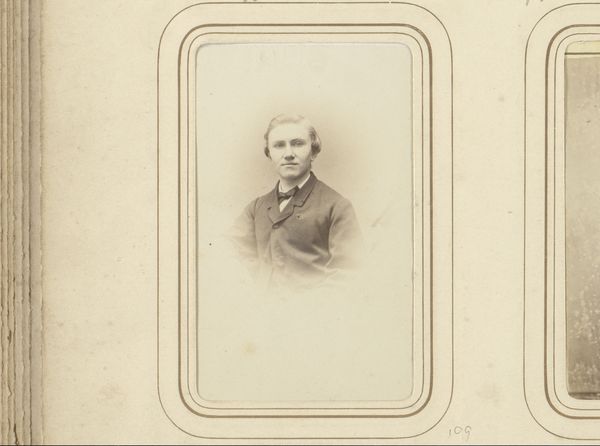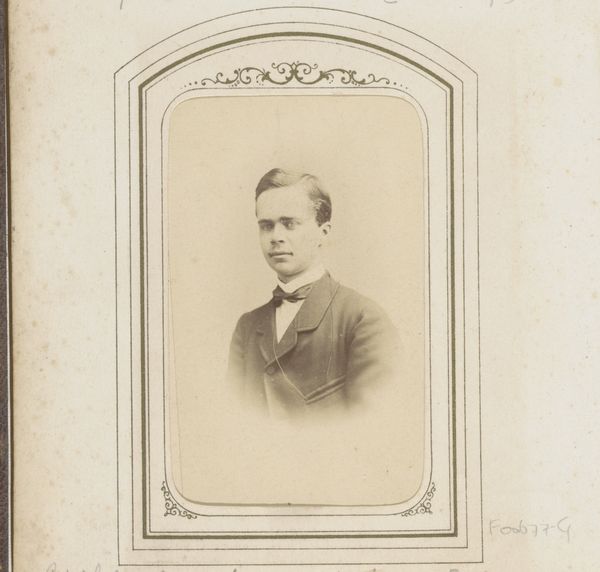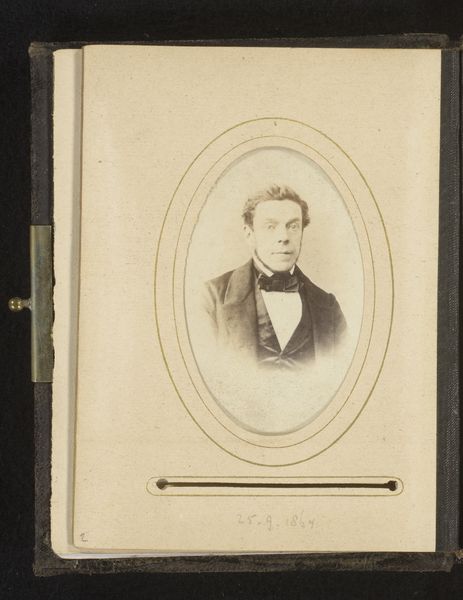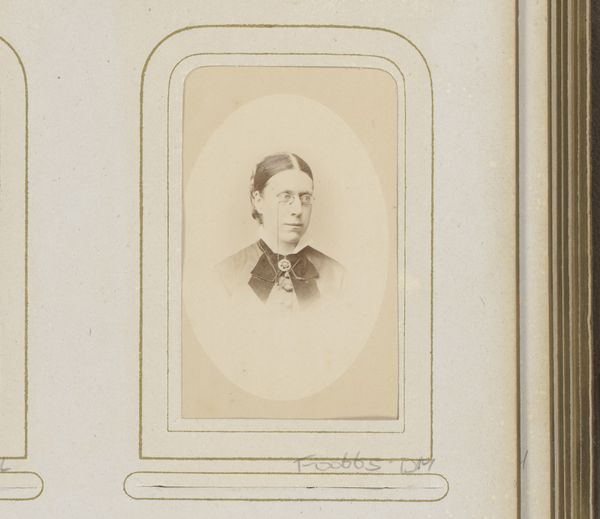
Fotoreproductie van een prent met een portret van Hendrik Tollens naar Dirk Jurriaan Sluyter door Pieter Oosterhuis 1860 - 1885
0:00
0:00
pieteroosterhuis
Rijksmuseum
Dimensions: height 137 mm, width 97 mm
Copyright: Rijks Museum: Open Domain
Curator: This portrait exudes a quiet strength. It's a photographic reproduction of a print, depicting Hendrik Tollens, based on a drawing by Dirk Jurriaan Sluyter, and masterfully rendered in the photographic medium by Pieter Oosterhuis sometime between 1860 and 1885. The albumen print creates this wonderful sepia tone. Editor: There's a melancholic air, too. Look at the tight framing and the way the light catches the lines on his face, aging and gravitas all captured in an oval. You see a determined man with the tool of his trade -- what is it, a quill, a writing tool of some sort? It speaks to intellect, doesn't it? Curator: Absolutely, the quill is intentional. Tollens was a celebrated poet, and the reproduction here solidifies his legacy as a man of letters. Consider that photography was still a relatively new medium. Reproducing a print via photography grants it another layer of accessibility and permanence within a changing society. Editor: So, the symbolism lies in the accessibility. I read something more complex into the quill... the power to not just express but immortalize; almost like a saint holding an emblem that reveals something vital. Though I'll grant, the very process of photographic reproduction also grants its own type of immortality. Did photography impact public commissions and perceptions of artists? Curator: Indeed. It democratized portraiture, certainly. Before, a painted portrait was a luxury for the elite, while photographic portraits became more affordable and accessible to a wider segment of society. In terms of Tollens, consider his poetry itself—celebratory and nationalistic. Disseminating his image was almost certainly politically charged during the nation-building era. Editor: A powerful point. You have this romantic figure filtered through new technology. It shows how the Romantics knew very well what it meant to make and shape a visual language, even as "high" art was making way for realism. He isn't just a man but a symbol manufactured for popular consumption, but I like it. Curator: The layering of media here really adds complexity, doesn't it? A drawing translated into a print and then photographically reproduced -- each step informs and shapes our understanding of Tollens. Editor: Absolutely. The technologies really impact how he is received, from the hand-drawn line, the printing press, to finally, photochemicals and light in an emulsion. All vying to make sure Tollens is an author the world can never forget.
Comments
No comments
Be the first to comment and join the conversation on the ultimate creative platform.
